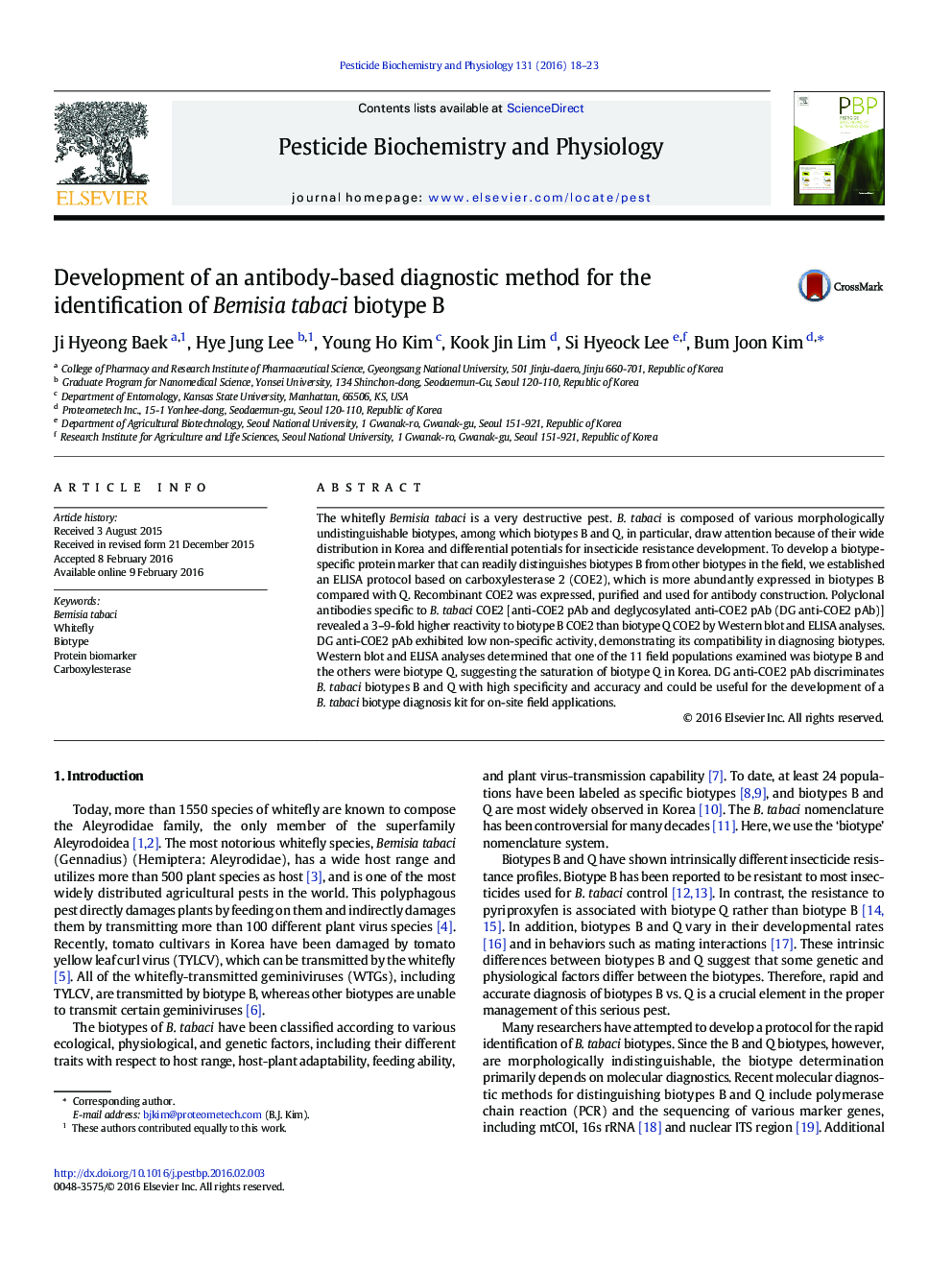| Article ID | Journal | Published Year | Pages | File Type |
|---|---|---|---|---|
| 2008952 | Pesticide Biochemistry and Physiology | 2016 | 6 Pages |
•An ELISA protocol for Bemisia tabaci biotype B diagnosis was proposed.•B. tabaci COE2 antibodies revealed 3–9-fold higher reactivity to B than Q type.•Biotypes of 11 field populations were examined by Western blot and ELISA.•DG anti-COE2 pAb discriminates biotypes B and Q with high specificity and accuracy.
The whitefly Bemisia tabaci is a very destructive pest. B. tabaci is composed of various morphologically undistinguishable biotypes, among which biotypes B and Q, in particular, draw attention because of their wide distribution in Korea and differential potentials for insecticide resistance development. To develop a biotype-specific protein marker that can readily distinguishes biotypes B from other biotypes in the field, we established an ELISA protocol based on carboxylesterase 2 (COE2), which is more abundantly expressed in biotypes B compared with Q. Recombinant COE2 was expressed, purified and used for antibody construction. Polyclonal antibodies specific to B. tabaci COE2 [anti-COE2 pAb and deglycosylated anti-COE2 pAb (DG anti-COE2 pAb)] revealed a 3–9-fold higher reactivity to biotype B COE2 than biotype Q COE2 by Western blot and ELISA analyses. DG anti-COE2 pAb exhibited low non-specific activity, demonstrating its compatibility in diagnosing biotypes. Western blot and ELISA analyses determined that one of the 11 field populations examined was biotype B and the others were biotype Q, suggesting the saturation of biotype Q in Korea. DG anti-COE2 pAb discriminates B. tabaci biotypes B and Q with high specificity and accuracy and could be useful for the development of a B. tabaci biotype diagnosis kit for on-site field applications.
Graphical abstractFigure optionsDownload full-size imageDownload as PowerPoint slide
